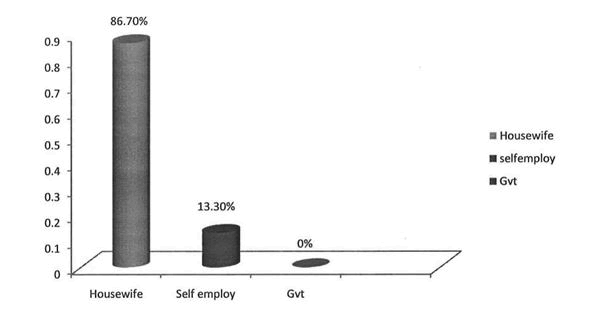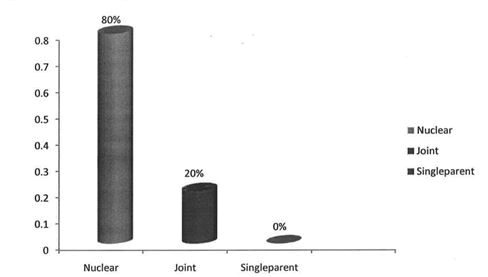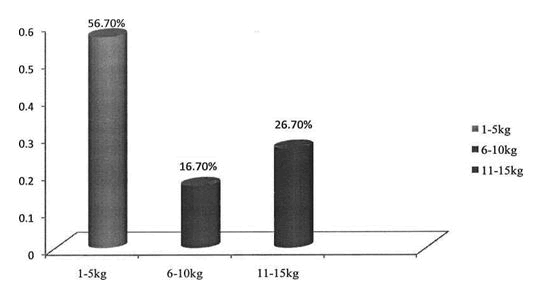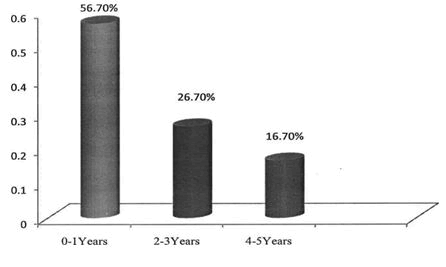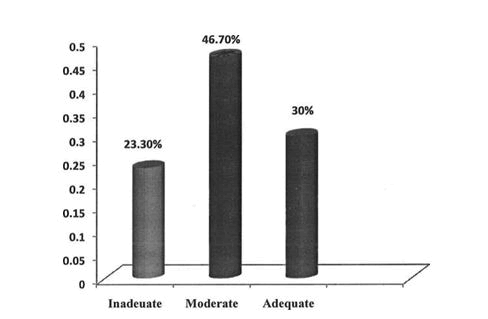Research Article - (2021) Volume 9, Issue 12
A Study to Assess the Level of Knowledge Regarding Malnutrition among Mothers of under Five Children at Selected Area of Guduvancherry
*Correspondence: AR. Bharathi, Department of Nursing, Bharath Institute of Higher Education and Research, Selaiyur, Chennai, Tamil Nadu, India, Email:
Abstract
Malnutrition is widely prevalent of among under five children and is still the major problem in our country especially in urban slums.
Objectives: A study was conducted to assess the knowledge among mothers of under five children regarding prevention of malnutrition view to develop health education module. Method: Descriptive survey approach was adopted to collect data. A structured interview schedule was prepared and administered to30 mothers of under five children based on convenient sampling technique at selected area of guduvancherry, chennai.
Result: Regarding the knowledge on malnutrition, 7(23.3%) mothers had inadequate knowledge, 14 (46.7%) mothers had moderate knowledge and 9 (30%) mothers had adequate knowledge. Considering the association of level of knowledge of the mothers with the demographic variables, mother’s education showed significant association (X2=9.8), type of family showed significant association (X2=3.18), and birth space of children also showed significant association (X2=3.9).
Conclusion: It concluded that there was moderate knowledge among the mothers of under five children regarding prevention of Malnutrion & According to association between knowledge and demographic variables, there is significant between the mothers education, type of family, birth spacing of children.
Keywords
Malnutrition, Under five mothers, Assess, KnowledgeIntroduction
“Children are future of society and mothers are guardian of that future,” Foremost, health, safety and nutrition for the young child is written on behalf of young children everywhere. Ultimately, it is the children who benefit from having parents who understand and know how to protect and promote their safety and well-being by knowing regarding nutrition.
Nutrition is the provision, to cells and organisms, of the materials necessary (in the form of food) to support life. Many common helath problems can be prevented or alleviated with a healthy diet. Nutrients are organic & in organic complexes contained in food. There are six major classes of nutrients those are mainly carbohydrates, fats, minerals, protein, vitamins, and water. These nutrient classes can be categorized as either macronutrients (needed in relatively large amounts) or micronutrients (needed in smaller quantities). The macronutrients (excluding water) provide structural material (amino acids from which proteins are built, and lipids from which cell membranes and some signalling molecules are built, and lipids from which cell membranes and some signalling molecules are built), energy. Vitamins, minerals, fiber, and water do not provide energy, but are required for other reasons. A third class of dietary material, fiber, is also required, for both mechanical and biochemical reasons, although the exact reasons remain unclear.
Mother is the one who take care of the child, it is very important that she should need to have knowledge regarding care of under-five and nutrition which they need, under-fives are “age in¬between 0-5 years of child”. Healthy eating and physical activity are essential for growth and development in childhood. To help children develop healthy eating patterns from an early age, it is important that the food and eating patterns to which they are exposed - both at home and outside the home - are those which promote positive attitudes to good nutrition.
Overall global progress in reducing Protein Energy Malnutrition among infants and young children is exceedingly slow and completely inadequate for even approaching the year 2000 goal of a 50 % reduction in 1990 prevalence levels, currently an estimated 167.90 million children under 5 years of age i.e., 27.41 of the world children in this group are still malnourished. The effects which bring through mothers education were: Improved health and nutrition knowledge, Psychological changes and improved nutritional behavior, Shift of power relations within the household in favour of better nutrition which includes breast feeding, weaning practices and child feeding and pregnancy diets may lead to more effective dietary behaviour on the part of mothers who manage food resources within the household.
Materials and Methods
A descriptive research approach, & non experimental design was used, the sample size consist of 30 under five parents were selected by Non probability convenience sampling technique was used for collecting data. The study was conducted among under five parents in selected area of community guduvancherry, Chennai. The Inclusion criteria, Parents who are all having children between 1 to. 5 years, Residing in selected rural area, having more than one child. & parents who are willing to participate in study. Exclusion criteria, having children group more than 5 years, working in health care sectors, suffering with any chronic physical or mental illness. Those who are not present during the time of data collection. Before data collection, the researcher got formal permission from Head of the department and alandur primary health canter by submitting an application giving assurance to abide by the rules and regulations.
The investigator had collected the data for one week. A prior permission to be obtained fromtheCommunityLeader. Informed consent was taken from the mothers and the questionnaire were distributed by the researcher to the mothers of under five children. The data collection was started from 12.03.2018 to 18.03.2018. The participants were given the questionnaire and were explained about the purpose and aim of study and the instructions for making the answers were made clear and they were made to mark the answers in the presence of the investigator. After the mother had marked the answers, the questionnaire were collected back carefully marked sure everyone had answer to all the questions and everyone return back the questionnaire.
Method of Data Analysis: Frequency and percentage distribution were used to determine demographic variables among mothers of under five children. Frequency and percentage distribution with mean and standard distribution to assess the knowledge of PEM among mothers of under five children. Inferential Statistics: Chi square test were used to assess the level of knowledge among mothers of under five children.
Results
Considering the age distribution of mothers 15-25 years old 18 (60%), Mothers were 26-35 years old, 12(40%) and Mothers were 36-45 years old, 0(0%).
Show the distribution of population according to the socio economic status. Low 0 (0%), Moderate 30 (100%) and High 0 (0%).
Table1: Frequency and percentage distribution of demographic variable of age of population.
| Demographic variables | Frequency | Percentage% | |
|---|---|---|---|
| Age | 15-25 Years | 18 | 0.6 |
| 26-35 Years | 12 | 0.4 | |
| 36-45 Years | - | 0 | |
| Religious | Hindu | 18 | 0.6 |
| Christian | 5 | 0.167 | |
| Muslim | 7 | 0.233 | |
| Socio economic status | Low | - | 0 |
| Moderate | 30 | 1 | |
| High | - | 0 | |
| Mothers education | Illiterate | 2 | 0.067 |
| Higher | 20 | 0.667 | |
| secondary | - | 0.267 | |
| Graduate | 8 | ||
| Mothers occupation | House wife | 26 | 0.867 |
| Self-employ | 4 | 0.133 | |
| Government | - | 0 | |
| Types of family | Nuclear | 24 | 0.8 |
| Joint | 6 | 0.2 | |
| Single parent | - | 0 | |
| Maternal conception age | 18-25 Years | 25 | 0.833 |
| 26-30 Years | 3 | 0.1 | |
| 31-36 Years | 2 | 0.067 | |
| Baby weight | 1-5 kg | 17 | 0.567 |
| 6-10 kg | 5 | 0.167 | |
| 11-15 kg | 8 | 0.267 | |
| Number of children | 0-1 Child | 16 | 0.533 |
| 2-3 Child | 14 | 0.467 | |
| 4-5 Child | - | 0 | |
| Birth spacing of children | 0-1 Year | 17 | 0.567 |
| 2-3 Year | 8 | 0.267 | |
| 4-5 Year | 5 | 0.167 | |
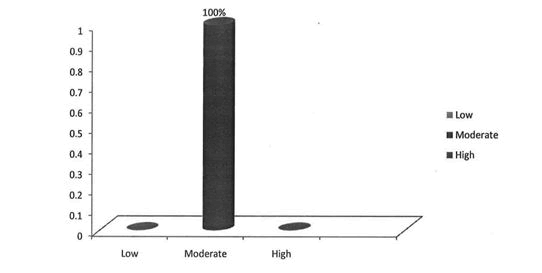
Figure 1: Percentage distribution of socio economic status.
Show the distribution of population according to the socio economic status. Low 0 (0%), Moderate 30 (100%) and High 0 (0%).
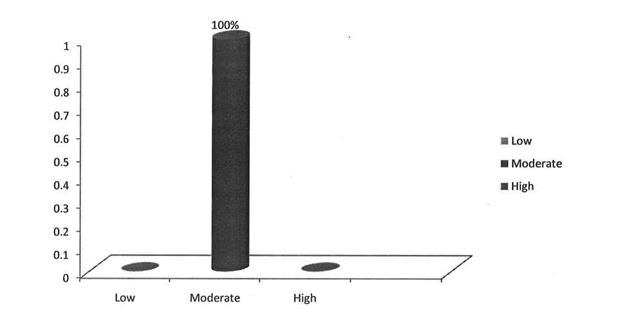
Figure 2: Percentage distribution of socio economic status.
Show the distribution of population according to the socio economic status. Low 0 (0%), Moderate 30 (100%) and High 0 (0%).
Figure 3: Percentage distribution of mother’s occupation.
Show the distribution of population according to their mother’s occupation. Housewife 26 (86.7%), self-employ 4 (13.3%) and government 0 (0%).
Figure 4: Percentage distribution of types of family.
Show the distribution of population according to their types of family. Nuclear 24 (80%), joint 6 (20%) and single parent 0 (0%).
Figure 5: Percentage distribution of types of family.</
Show the distribution of population according to their numbers of children .0-1 child (53.3%), 2-3 child 14 (46.7%) and 4-5 child 0 (0%).
Figure 6: Percentage distribution of birth spacing of children.
Show the distribution of population according to their birth spacing of children. 0-l years old 17(56.7%), 2-3years old 8 (26.7%) and 4-5years old 5 (16.7%).
Table 2: Distribution of mothers of under five children according to the knowledge scores.
| S.NO | Knowledge level (score) | Frequency (f) | Percentage (%) |
|---|---|---|---|
| 1 | Inadequate | 7 | 0.233 |
| 2 | Moderately adequate | 14 | 0.467 |
| 3 | Adequate | 9 | 0.3 |
Keynote: Inadequate knowledge - 0-7 marks, moderately knowledge - 8-10 marks, & adequate knowledge -11-15 marks
Table describes the knowledge level of mothers of under five children. On the basis of knowledge score 7(23.3%) had inadequate knowledge, 14 (46.7%) had moderately adequate knowledge and 9 (30%) had adequate knowledge.
Figure 7: Frequency and percentage distribution of mothers of under five children according to the knowledge scores.
Fig7 describe the knowledge level of mothers of under five children. On the basis of knowledge score 7 (23.3%) had inadequate knowledge, 14 (46.7%) moderate adequate knowledge and 9 (30%) adequate knowledge.
Table 3: Association of Level of Knowledge regarding Malnutrition among Mothers of under Five Children with Their Demographic Variables.
| S. No. | Demographic Variables | Level of Knowledge | Chi square | P-value | |||||
|---|---|---|---|---|---|---|---|---|---|
| Adequate | Moderate | Inadequate | |||||||
| Score | % | score | % | Score | % | ||||
| 1 | Age | x2=6.4 | Non-significant | ||||||
| 15-25 Years | 7 | 23.3 | 7 | 23.3 | 4 | 13.3 | |||
| 26-35 years | 2 | 6.7 | 7 | 23.3 | 3 | 10 | |||
| 36-45 years | 0 | 0 | 7 | 0 | 0 | 0 | |||
| 2 | Religious | x2 = 4.2 | Non-significant | ||||||
| Hindu | 5 | 16.7 | 8 | 26.7 | 5 | 16.7 | |||
| Christian | 3 | 10 | 1 | 3.3 | 1 | 16.7 | |||
| Muslim | 1 | 3 | 5 | 16.7 | 1 | 3.3 | |||
| 3 | Socio Economic Status | x2=0 | Non-significant | ||||||
| Low | 9 | 30 | 14 | 0.467 | 7 | 0.233 | |||
| High | 0 | 0 | 0 | 0 | 0 | 0 | |||
| 4 | Mothers Education | X2=9.8 | * Significant | ||||||
| Illiterate | 0 | 0 | 1 | 3.3 | 1 | 3.3 | |||
| Higher secondary | 7 | 23.3 | 9 | 30 | 4 | 0.133 | |||
| graduate | 2 | 6.7 | 4 | 13.3 | 2 | 6.7 | |||
| 5 | Mothers Occupation | X2=6.3 | Non-significant | ||||||
| Housewife | 7 | 23.3 | 12 | 40 | 7 | 23.3 | |||
| Self-employ | 2 | 6.7 | 2 | 6.7 | 0 | 0 | |||
| Government | 0 | 0 | 0 | 0 | 0 | 0 | |||
| 6 | Types Of Family | x2=3.18 | significant | ||||||
| Nuclear | 9 | 30 | 10 | 33.3 | 5 | 16.7 | |||
| Joint | 0 | 0 | 4 | 13.3 | 2 | 6.7 | |||
| Single parent | 0 | 0 | 0 | 0 | 0 | 0 | |||
| 7 | Maternal Conception Age | x2= 1.8 | Non-significant | ||||||
| 18-25years | 8 | 26.7 | 12 | 40 | 5 | 16.7 | |||
| 26-30years | 1 | 3.3 | 1 | 3.3 | 1 | 3.3 | |||
| 31-36years | 0 | 0 | 1 | 3.3 | 1 | 3.3 | |||
| 8 | Baby Weight | x2=6.35 | Non-significant | ||||||
| 1-5kg | 5 | 16.7 | 10 | 20 | 2 | 6.7 | |||
| 6-10kg | 1 | 3.3 | 3 | 10 | 1 | 3.3 | |||
| 10 & above | 3 | 10 | 1 | 33.3 | 4 | 13.3 | |||
| 9 | Numbers of Children | x2 = 2.3 | Non-significant | ||||||
| 0-1 child | 5 | 16.7 | 9 | 30 | 2 | 6.7 | |||
| 2-3 child | 4 | 3.3 | 5 | 16.7 | 5 | 16.7 | |||
| 4-5 child | 0 | 0 | 0 | 0 | 0 | 0 | |||
| 10 | Birth Spacing of Children | X2=3.9 | Non-significant | ||||||
| 0-1year | 5 | 16.7 | 9 | 30 | 3 | 10 | |||
| 2-3year | 4 | 3.3 | 2 | 6.7 | 2 | 6.7 | |||
| 4-5year | 0 | 0 | 3 | 10 | 2 | 6.7 | |||
Keys: Significant shows the association the level of practice with the demographic variables age, religious, socio economic status, mother’s occupation, maternal conception age, baby weight and numbers of children are not significant statistical significance was calculated by using chi square test.
Discussion
Amongtheknowledgelevelofmothers. On the basis of knowledge score 9(30%) had adequate knowledge, 14(46.7%) had moderate knowledge and 7(23.3%) had inadequate knowledge.
The chi -square was used to associate the knowledge score with age, religious, socio economic status, mothers’ education, mother’s occupation, type of family, maternal conception age, baby weight, number of children, birth spacing of the child. The study revealed that there was an association between knowledge of mothers having under five children with demographic variables like mothers education, type of family, birth spacing of child and there was no association between knowledge of mothers of under five children with selected demographic variables like age, religion, socio economic status, mothers occupation, maternal conception age, baby weight, number of children.
Conclusion
Based on the findings of the present study, following conclusions were drawn, majority of the mothers had moderate knowledge 14(46.7) and 7 (23.3) had inadequate knowledge. There is significant association of the level of knowledge of the mothers with their demographic data such as mother’s education (X2=9.8), type of family (X2=3.18),and birth space of children (X2=3.9). Hence the knowledge of protein energy malnutrition among mothers of under five children can be enhanced through compassion, competence, conscience, confidence, and commitment among instructors working in the clinical area.
Implication
Nurses can improve the knowledge of mothers having under five children malnutrition by giving information booklet. The present study has several implication in nursing practice, nursing education, nursing administration and nursing research are follows:
• The study can enhance the knowledge of mothers of fewer than five children in applying day to day life, & reducing malnutrition.
• Nurse administrator can conduct program for community health personnel to update their knowledge.
• Utilization of findings and discrimination of knowledge in the field of nursing practice.
• Extensive research must be conducted to identify the beneficial outcome in reducing morbidity.
Limitation
The study is limited to 30 samples, & the target population was among mothers of under five children.
Recommendation
A similar study can be conducted with larger sample to generalize the research findings, A similar study can be conducted among mothers of under five children, In depth research can be carried out on specific nutritional problem in under five children, & A study can be conducted to assess the prevalence of nutritional problems among under five children in specific area.
Funding
No funding sources
Ethical Approval
The study was approved by the Institutional Ethics Committee.
Conflict of Interest
The authors declare no conflict of interest.
Acknowledgments
The encouragement and support from University, Chennai,India is gratefully acknowledged for providing the laboratory facilities to carry out the research work.
References
- Augustyniak, Robert A, Singh Karan, Zeldes Daniel, Singh Melissa, et al. "Maternal protein restriction leads to hyperresponsiveness to stress and salt-sensitive hypertension in male offspring."Ame J Physio-Regulat, Integrative and Comparative Physiology298, (2010): R1375-R1382.
- Bellinger, L, Sculley DV, and Langley-Evans SC. "Exposure to undernutrition in fetal life determines fat distribution, locomotor activity and food intake in ageing rats."Inte J Obes30, (2006): 729-738.
- Bistrian, Bruce R, McCowen Karen C, and Chan Samuel. "Protein-energy malnutrition in dialysis patients."AmeJ kidne diseas33, (1999): 172-175.
- Bosaeus, Ingvar. "Nutritional support in multimodal therapy for cancer cachexia."Supp Care Csancer16, (2008): 447-451.
- Liu, Theodore, Howard Renée M, Mancini Anthony J, and Weston William L, et al. "Kwashiorkor in the United States: fad diets, perceived and true milk allergy, and nutritional ignorance."Arch Dermatol137, (2001): 630-636.
Author Info
Department of Nursing, Bharath Institute of Higher Education and Research, Selaiyur, Chennai, Tamil Nadu, IndiaCitation: AR. Bharathi A Study to Assess the Level of Knowledge Regarding Malnutrition among Mothers of under Five Children at Selected Area of Guduvancherry , J Res Med Dent Sci, 2021, 9(11): 1-6
Received: 01-Dec-2021 Accepted: 15-Dec-2021 Published: 22-Dec-2021

